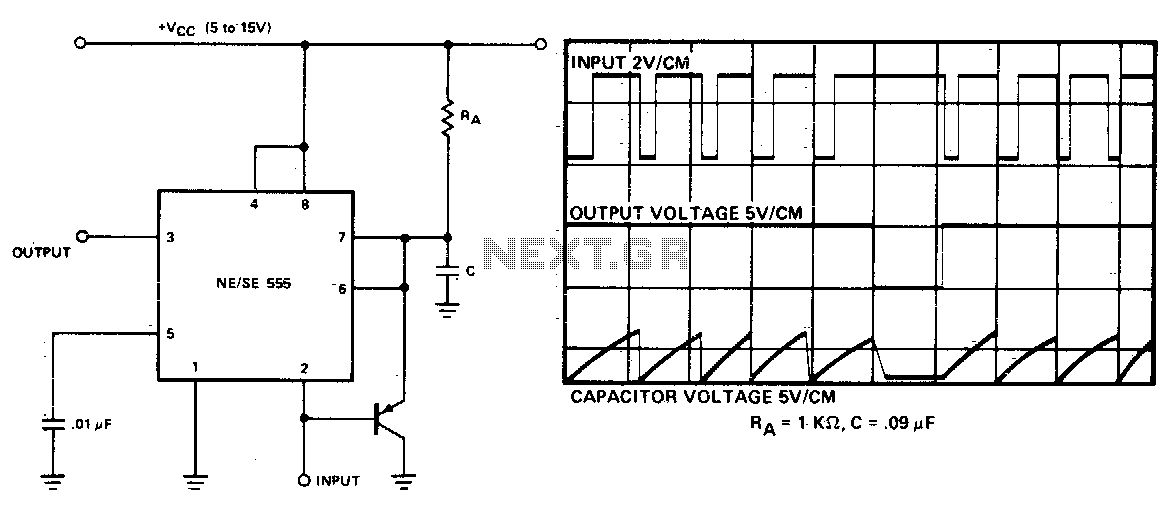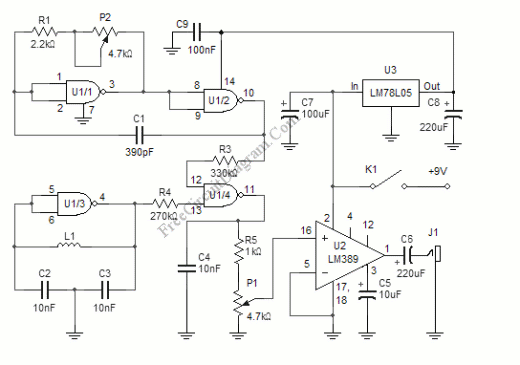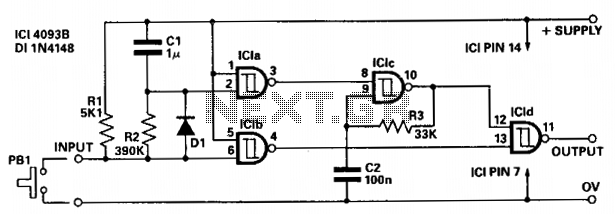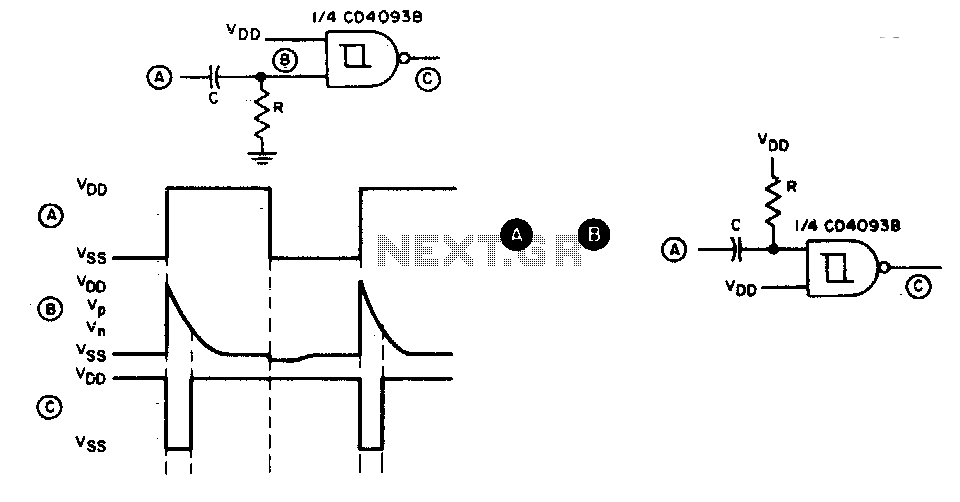
Missing pulse detector

The timing cycle is continuously reset by the input pulse train. A change in frequency or a missing pulse allows the timing cycle to complete, resulting in a change in the output level. For this application, the time delay should be set to be slightly longer than the normal time between pulses. The graph shows the actual waveforms observed in this mode of operation.
In this electronic circuit configuration, the timing cycle is primarily governed by a pulse train input, which serves to reset the timing mechanism continuously. The circuit is designed to detect variations in the frequency of the incoming pulse train or identify instances where a pulse is absent. When such a change occurs, the timing cycle is allowed to complete, leading to a corresponding alteration in the output level.
To ensure reliable operation, particularly in environments where pulse trains may exhibit slight variations in timing, the time delay within the circuit must be calibrated to exceed the typical interval between incoming pulses. This adjustment guarantees that the timing cycle can effectively respond to the intended changes without being prematurely reset by the next pulse in the sequence.
The accompanying waveform graph illustrates the actual signal behavior during this operational mode, providing a visual representation of how the timing cycle interacts with the pulse train input. The graph typically includes features such as the pulse width, frequency, and the resulting output level shifts, which are critical for analyzing the performance and reliability of the timing circuit.
Overall, the design emphasizes the importance of precise timing adjustments and the ability to handle variations in input signals, making it suitable for applications where timing accuracy is paramount.The timing cycle is continuously reset by the input pulse train. A change in frequency, or a missing pulse, allows completion of the timing cycle which causes a change in the output level. For this application, the time delay should be set to be slightly longer than the normal time between pulses
The graph shows the actual waveforms seen in this mode of operation.
In this electronic circuit configuration, the timing cycle is primarily governed by a pulse train input, which serves to reset the timing mechanism continuously. The circuit is designed to detect variations in the frequency of the incoming pulse train or identify instances where a pulse is absent. When such a change occurs, the timing cycle is allowed to complete, leading to a corresponding alteration in the output level.
To ensure reliable operation, particularly in environments where pulse trains may exhibit slight variations in timing, the time delay within the circuit must be calibrated to exceed the typical interval between incoming pulses. This adjustment guarantees that the timing cycle can effectively respond to the intended changes without being prematurely reset by the next pulse in the sequence.
The accompanying waveform graph illustrates the actual signal behavior during this operational mode, providing a visual representation of how the timing cycle interacts with the pulse train input. The graph typically includes features such as the pulse width, frequency, and the resulting output level shifts, which are critical for analyzing the performance and reliability of the timing circuit.
Overall, the design emphasizes the importance of precise timing adjustments and the ability to handle variations in input signals, making it suitable for applications where timing accuracy is paramount.The timing cycle is continuously reset by the input pulse train. A change in frequency, or a missing pulse, allows completion of the timing cycle which causes a change in the output level. For this application, the time delay should be set to be slightly longer than the normal time between pulses
The graph shows the actual waveforms seen in this mode of operation.





